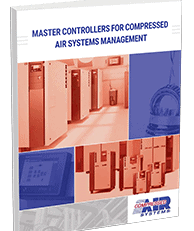Compressed Air Systems Equipment Featured in BBC Documentary
Compressed Air Systems has partnered with a number of different industries to help them improve their equipment and run more efficient operations. From the United States Postal Service to Lockheed Martin, but one of the more unusual applications of our systems was to help prove that ships could disappear in the Bermuda Triangle.
If you’re driving a pleasure craft or captaining a fully-loaded freighter, you might think twice when you have to pass through the triangle. It has long been known for the stories unexplained disappearances of ships and aircraft, and many have tried to explain it.
But how does Compressed Air Systems and Kaeser Air Compressors help explain what many believe to be alien abductions, or rifts in the fabric of space and time?
An Interesting Opportunity
The British Broadcasting Corporation (BBC) was working on a documentary television show about the disappearance of ships in the Bermuda Triangle, and focused on those who are trying to explain the disappearances through scientific means. One of the theories put forth was that methane gas bubbles, welling up from the bottom of the ocean, reduced the buoyancy of ships in water, causing them to sink.
In order to replicate these conditions, researchers needed a way to simulate gas bubbling up from the ocean floor. The BBC approached Compressed Air Systems to help them craft a way of simulating the ocean conditions they felt they needed. As an expert in compressed air applications, CAS jumped at the opportunity to work with the BBC and to help in trying to solve a well-known mystery.
The Experiment
Conducting the experiment involved loading a small boat without an engine and placed cinder blocks in order to simulate the full weight of the vessel. At the same time, a grid of pipes was constructed to carry the compressed air and blow it out through small holes in the pipes. This would then simulate the gas eruption from the ocean floor, while Kaeser MobilAir Diesel Driven Air Compressors pumped the air into the tubes and changing the mix of the water and air to 25% air. The behavior of the boat would then be observed to see whether or not there was a loss of buoyancy, sinking the boat.
The Results
Researchers started up the Kaeser air compressors, which began pumping air into the pipes. A patch of violent bubbles formed on the surface of the water, directly under the test boat. At 25% air, these bubbles should have sank the boat, but the upward force of the bubbles canceled out the weight of the boat itself.
Once the boat was moved to the edge of the bubbles, however, the difference in buoyancy between the back and front of the boat caused it to tip downward. Eventually, the weight of water in the back of the boat and the buoyancy in the front dragged it down to the ocean floor.
As the go-to experts in compressed air applications, CAS has helped companies meet any application they require. We’ve been involved in trying to solve one of the most widely known unexplained mysteries in the world. If we can do this, we can help you with your needs.
Contact us today and let us show how we can solve your compressed air mysteries.










